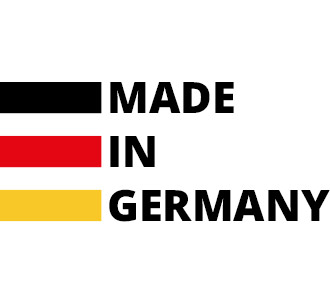Preguntas frecuentes
Respuestas a las preguntas más frecuentes
¿Tiene alguna pregunta sobre los productos de ElektroPhysik? ¿Sobre las distintas aplicaciones, el servicio de reparación o el procedimiento SIDSP? Hemos recopilado aquí las preguntas más frecuentes y sus respectivas respuestas.
Is it possible to measure the coating thickness on nickel?
In fact, it depends on the nickel layer.
There are two different possibilities to layer a substrate with a nickel coat:
In the case of a electroless nickel painting, also known as chemical nickel, the material to be coated is placed in a nickel-saturated solution. Then the nickel which is in the solution is settled on the material. Usually, this solution also contains phosphor. Once the percentage of phosphor is higher than 10%, the nickel layer is not ferromagnetic anymore. Electroless nickel painting on ferromagnetic steel can be measured by a MiniTest with magnetic induction sensors. If the steel is non-ferromagnetic, it is only possible to measure with a destructive (coulometric) method.
In the case of a galvanized nickel painting, there is the substrate (at the cathode) and the nickel (at the anode) in a electrolytic bath through which electricity is conducted so the nickel lays on the substrate. Galvanized nickel is always ferromagnetic and its thickness (in a range up to 50 µm) can be measured with our MikroTest NiFe50 on steel and on non-ferrous metals with the models MikroTest Ni.
Is steel always magnetic?
Unfortunately, it is not that easy. The term “steel” defines forgeable iron whose percentage of carbon is between 0,01 % and 2,06 %. It does not contain any further substances. This means that this steel, also known as carbon-steel, is magnetic.
If the steel is out of further substances e.g. different metals, it is called a metallic alloy. However, it is still marked as steel.
To the main types of steel belongs stainless steel as a collective term for rust-resistant steels. Stainless steel mostly contains more than 10 % of chrome and additional substances e.g. nickel, titan or molybdenum so the corrosion resistance is higher.
Is the stainless steel an alloy of chrome steel, is this composition also magnetic. As soon as the chrome steel is alloyed with nickel, there is still a slight magnetism. Once there will be added some of molybdenum, the stainless steel loses its magnetic characteristic at all.
If you are not sure whether your material is magnetic or unmagnetic, we can support you.
How do I calibrate on rough surfaces?
Our MiniTest 650 (example) is very suitable for rough surfaces. When measuring on shot-blasted surfaces, readings tend to be higher than the actual coating thickness. This is due to the physical nature of shot-blasted surfaces. In this case, it is recommended to use the statistics program and to calculate the mean thickness over the peaks as follows:
Method A (Rz > 20 µm): This method should be used for surfaces with a roughness grad of min. 20 µm (0.8 mils).
- The gauge should be calibrated according to the method described in the manual (3.2.2). For the calibration, first use an uncoated sample which is not shot-blasted. Its surface should be smooth and it should have the same curvature radius and substrate as the later measuring object.
- Now take an uncoated but shot-blasted sample (also with same requirements as the later measuring object, see point 1) and take about 10 readings to obtain the mean Xo.
- After this, take approx. 10 further readings on a coated shot blasted sample of the same quality to produce the mean value Xm.
- The difference (Xm-Xo) ± s gives you the mean value of coating thickness (Xeff) over the peaks with «s» being the higher standard deviation of the two values Xm and Xo: Xeff = (Xm-Xo) ± s
How do I measure on small parts?
 With the help of our miniature probes is it even possible to measure the coating thickness on small parts as shims or nuts. Due to the different types of constructions of our probes (0°, 45° or 90°), it is enabled to measure on surfaces which are difficult to access. With our precision standard, it is easy to position the micro sensor optimally, so the guaranteed precision of measurements is ensured.
With the help of our miniature probes is it even possible to measure the coating thickness on small parts as shims or nuts. Due to the different types of constructions of our probes (0°, 45° or 90°), it is enabled to measure on surfaces which are difficult to access. With our precision standard, it is easy to position the micro sensor optimally, so the guaranteed precision of measurements is ensured.
¿No ha resuelto su duda? Póngase en contacto con nosotros: Por teléfono (0221 75204-0), por correo electrónico (info@elektrophysik.com) o a través de nuestro formulario de contacto.


